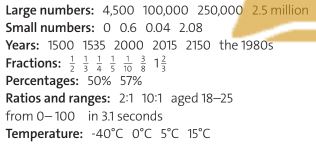Bài học hôm nay sẽ giúp các em xác định được ngữ cảnh của một cuộc hội thoại với chủ đề vô cùng hấp dẫn và thân thuộc “The body’s limits”, đồng thời mở rộng vốn từ và cải thiện kỹ năng nghe - hiểu, mời các em tham khảo nội dung bài học Unit 3 Sustainable health Tiếng Anh lớp 11 phần Listening nằm trong chương trình Chân trời sáng tạo.
Tóm tắt bài
1.1. Unit 3 lớp 11 Listening Task 1
SPEAKING
Describe and compare the photos. What are the similarities and differences between the activities? Use the words below to help you.
(Mô tả và so sánh các bức ảnh. Những điểm tương đồng và khác biệt giữa các hoạt động là gì? Sử dụng các từ dưới đây để giúp bạn.)

Guide to answer
Looking at the pictures I can see they are running in the desert and the second picture shows the man who is staying in a tent on a cold mountain covered with a lot of snow.
The people in the first picture, I guess they are taking part in a running activity because they have numbers on their T-shirts. They look really tired because of the hot weather and I guess they are becoming dehydrated. By contrast, in the second picture, the weather is frostbite because the main color of the picture is the color of snow. The man is sitting on the top of the mountain with a high altitude. He is also wearing a face mask to supply oxygen. I guess he is a climber, and he wants to conquer this mountain.
Tạm dịch:
Nhìn vào hai bức ảnh, tôi nghĩ cả hai đều đang mô tả những môn thể thao mạo hiểm thực sự khó thực hiện.
Trong bức ảnh đầu tiên, tôi có thể thấy họ đang chạy trên sa mạc và bức ảnh thứ hai cho thấy người đàn ông đang ở trong lều trên một ngọn núi lạnh giá có nhiều tuyết bao phủ. Những người trong bức ảnh đầu tiên, tôi đoán họ đang tham gia một hoạt động đang chạy vì họ có số trên áo phông của họ. Họ trông thực sự mệt mỏi vì thời tiết nóng và tôi đoán họ đang bị mất nước. Ngược lại, ở bức tranh thứ hai, thời tiết lạnh cóng vì màu chủ đạo của bức tranh là màu của tuyết. Người đàn ông đang ngồi trên đỉnh núi rất cao. Anh ấy cũng đang đeo mặt nạ để cung cấp oxy. Tôi đoán anh ấy là một nhà leo núi và anh ấy muốn chinh phục ngọn núi này.
1.2. Unit 3 lớp 11 Listening Task 2
Read the Listening Strategy. Then try to say the numbers and measurements below. Listen and check.
(Đọc Listening Strategy. Sau đó cố gắng nói các con số và phép đo dưới đây. Nghe và kiểm tra.)
Guide to answer
Đang cập nhật
1.3. Unit 3 lớp 11 Listening Task 3
Read and listen to the article. Complete the article with numbers and measurements from exercise 2.
(Đọc và nghe bài viết. Hoàn thành bài viết với các số và phép đo từ bài tập 2.)
Script (Bài nghe)
There are many amazing stories of human survival, but actually our bodies are very fragile and do not cope well with extremes. Polar explorers can cope with temperatures of −40°C, but only if they keep warm. Most people will collapse if their body temperature drops by only 5°C, and if it drops by 15°C, they’ll die. Heat can be just as dangerous. Temperatures of 35°C are safe provided humidity is not above 50%. High altitudes are dangerous too. We pass out when the pressure falls below 57% of normal atmospheric pressure. This happens at about 4,500 metres. Climbers can go higher because their bodies gradually get used it, but no one survives for long at 8,000 metres. At high altitudes, lack of oxygen is another problem. At ground level, about 1/5 of the air is oxygen. If that falls below 1/10, we die.
Tạm dịch:
Có rất nhiều câu chuyện đáng kinh ngạc về sự sống còn của loài người, nhưng thực ra cơ thể chúng ta rất mỏng manh và không thể đối phó tốt với những điều cực đoan. Các nhà thám hiểm vùng cực có thể đối phó với nhiệt độ -40°C, nhưng chỉ khi họ giữ ấm. Hầu hết mọi người sẽ ngã quỵ nếu nhiệt độ cơ thể của họ chỉ giảm 5°C và nếu giảm 15°C, họ sẽ chết. Nhiệt có thể nguy hiểm như vậy. Nhiệt độ 35°C là an toàn với điều kiện độ ẩm không quá 50%. Độ cao cũng nguy hiểm. Chúng ta bất tỉnh khi áp suất giảm xuống dưới 57% áp suất khí quyển bình thường. Điều này xảy ra ở độ cao khoảng 4.500 mét. Những người leo núi có thể lên cao hơn vì cơ thể họ dần quen với điều đó, nhưng không ai sống sót lâu ở độ cao 8.000 mét. Ở độ cao lớn, thiếu oxy là một vấn đề khác. Ở mặt đất, khoảng 1/5 không khí là oxy. Nếu nó giảm xuống dưới 1/10, chúng ta sẽ chết.
Guide to answer
1. 40°C
2. 5°C
3. 15°C
4. 50%
5. 57%
6. 4,500
7. 1/5
8. 1/10
1.4. Unit 3 lớp 11 Listening Task 4
Listen to an interview with a scientist. Which of the people he talks about tested the body's limits deliberately?
(Nghe cuộc phỏng vấn với một nhà khoa học. Ai trong số những người mà anh ấy nói về đã cố tình kiểm tra giới hạn của cơ thể?)
Script (Bài nghe)
H = Host
P = Professor
H: Professor Martin, you’re interested in the limits of the human body. Is that right?
P: Yes, that’s right. So, for example, we’ve been asking: Is it possible to survive in a vacuum?
H: And what’s the answer?
P: Well, sadly we know how long humans can survive ina vacuum in outer space. Three Russian cosmonauts diedin 1971 when their space capsule had a major problem atan altitude of 168 kilometres. The pressure inside the capsule dropped to zero and the crew died after 30 to 40 seconds.
H: What a tragedy!
P: Yes, indeed. But it is possible to survive shorter periods of time in a vacuum. In 1966 a scientist was testing a spacesuit in a special room when the pressure suddenly dropped to almost zero for a period of 27 seconds. He passed out after 15 seconds and he woke up when the pressure inside the room returned to normal. He was fine.
H: Good! So what else have you been studying?
P: We’ve also been asking: how long can the human body survive without sleep?
H: And what is the answer?
P: Well, we can’t force people to stay awake until they die, so it’s impossible to know the exact limits. But we know about some extreme cases. For example, on 28 December 1963, Randy Gardner, a 17-year-old student, got up at 6 o’clock in the morning and didn’t go back to sleep again until the morning of 8 January 1964. That’s 264 hours.
H: Amazing! How many days is that?
P: About 11 days.
H: He probably slept for a week after that!
P: Actually, no. His first sleep after those 11 days lasted almost 15 hours.
Tạm dịch:
H = Người dẫn chương trình
P = Giáo sư
H: Giáo sư Martin, ông quan tâm đến giới hạn của cơ thể con người. Đúng vậy không ạ?
P: Vâng, đúng vậy. Chẳng hạn chúng tôi đang được hỏi rằng: Có thể tồn tại trong môi trường chân không không?
H: Và câu trả lời là gì?
P: Chà, thật đáng buồn là chúng ta biết con người có thể tồn tại bao lâu trong môi trường chân không ngoài vũ trụ. Ba nhà du hành vũ trụ người Nga đã chết vào năm 1971 khi khoang vũ trụ của họ gặp sự cố nghiêm trọng ở độ cao 168 km. Áp suất bên trong viên nang giảm xuống 0 và phi hành đoàn chết sau 30 đến 40 giây.
H: Thật là một bi kịch!
P: Vâng, đúng là như vậy. Nhưng là khả thi để tồn tại trong khoảng thời gian ngắn hơn trong môi trường chân không. Năm 1966, một nhà khoa học đang thử nghiệm bộ đồ phi hành gia trong một căn phòng đặc biệt thì áp suất đột ngột giảm xuống gần như bằng không trong khoảng thời gian 27 giây. Anh ta bất tỉnh sau 15 giây và tỉnh dậy khi áp suất trong phòng trở lại bình thường. Anh ấy vẫn ổn.
H: Tuyệt! Vậy ông còn nghiên cứu về gì nữa không ạ?
P: Chúng tôi cũng đã được hỏi rằng: cơ thể con người có thể tồn tại được bao lâu nếu không ngủ?
H: Và câu trả lời là gì?
P: Chà, chúng ta không thể bắt mọi người thức cho đến khi họ chết, vì vậy ta không thể biết giới hạn chính xác. Nhưng chúng tôi biết về một số trường hợp cá biêth. Ví dụ, vào ngày 28 tháng 12 năm 1963, Randy Gardner, một sinh viên 17 tuổi, thức dậy lúc 6 giờ sáng ngày 28/12/1963 và không ngủ lại cho đến sáng ngày 8/1/1964. Đó là 264 giờ.
H: Thật đáng kinh ngạc! Khoảng thời gian đó là bao nhiêu ngày?
P: Khoảng 11 ngày.
H: Có lẽ anh ấy đã ngủ một tuần sau đó!
P: Trên thực tế thì không. Giấc ngủ đầu tiên của anh ta sau 11 ngày đó kéo dài gần 15 tiếng.
Guide to answer
Answer: Randy Gardner
1.5. Unit 3 lớp 11 Listening Task 5
Read the sentences aloud, paying attention to the numbers. Then listen again and decide whether the sentences are true or false. Write T or F and correct the false sentences.
(Đọc to các câu, chú ý đến các con số. Sau đó nghe lại và quyết định xem câu đó đúng hay sai. Viết T hoặc F và sửa các câu sai.)
1 When a Russian space capsule had a major problem in 1971, the cosmonauts died in less than 30 seconds.
(Khi một khoang vũ trụ của Nga gặp sự cố nghiêm trọng vào năm 1971, các phi hành gia đã chết trong vòng chưa đầy 30 giây.)
2 In 1966, a scientist passed out after 15 seconds in a vacuum.
(Năm 1966, một nhà khoa học đã bất tỉnh sau 15 giây trong chân không.)
3 The scientist passed out for 27 seconds.
(Nhà khoa học bất tỉnh trong 27 giây.)
4 In the 1960s, Randy Gardner stayed awake for more than 250 hours.
(Vào những năm 1960, Randy Gardner đã thức hơn 250 giờ.)
5 After staying awake for so long, Randy Gardner then slept for almost 50 hours.
(Sau khi thức quá lâu, Randy Gardner sau đó đã ngủ gần 50 giờ.)
Guide to answer
1. When a Russian space capsule had a major problem in 1971, the cosmonauts died in less than 30 seconds.
(Khi một khoang vũ trụ của Nga gặp sự cố nghiêm trọng vào năm 1971, các phi hành gia đã chết trong vòng chưa đầy 30 giây.)
⇒ F
Thông tin: Three Russian cosmonauts diedin 1971 when their space capsule had a major problem atan altitude of 168 kilometres. The pressure inside the capsule dropped to zero and the crew died after 30 to 40 seconds. (Ba nhà du hành vũ trụ người Nga đã chết vào năm 1971 khi khoang vũ trụ của họ gặp sự cố nghiêm trọng ở độ cao 168 km. Áp suất bên trong viên nang giảm xuống 0 và phi hành đoàn chết sau 30 đến 40 giây.)
2. In 1966, a scientist passed out after 15 seconds in a vacuum. (Năm 1966, một nhà khoa học đã bất tỉnh sau 15 giây trong chân không.)
⇒ T
Thông tin: In 1966 a scientist was testing a spacesuit in a special room when the pressure suddenly dropped to almost zero for a period of 27 seconds. He passed out after 15 seconds and he woke up when the pressure inside the room returned to normal. (Năm 1966, một nhà khoa học đang thử nghiệm bộ đồ phi hành gia trong một căn phòng đặc biệt thì áp suất đột ngột giảm xuống gần như bằng không trong khoảng thời gian 27 giây. Anh ta bất tỉnh sau 15 giây và tỉnh dậy khi áp suất trong phòng trở lại bình thường.)
3. The scientist passed out for 27 seconds. (Nhà khoa học bất tỉnh trong 27 giây.)
⇒ F
Thông tin: In 1966 a scientist was testing a spacesuit in a special room when the pressure suddenly dropped to almost zero for a period of 27 seconds. (Năm 1966, một nhà khoa học đang thử nghiệm bộ đồ phi hành gia trong một căn phòng đặc biệt thì áp suất đột ngột giảm xuống gần như bằng không trong khoảng thời gian 27 giây.)
4. In the 1960s, Randy Gardner stayed awake for more than 250 hours. (Vào những năm 1960, Randy Gardner đã thức hơn 250 giờ.)
⇒ T
Thông tin: That’s 264 hours. (Đó là 264 giờ.)
5. After staying awake for so long, Randy Gardner then slept for almost 50 hours. (Sau khi thức quá lâu, Randy Gardner sau đó đã ngủ gần 50 giờ.)
⇒ F
Thông tin: His first sleep after those 11 days lasted almost 15 hours. (Giấc ngủ đầu tiên của anh ta sau 11 ngày đó kéo dài gần 15 tiếng.)
1.6. Unit 3 lớp 11 Listening Task 6
PRONUNCIATION
Listen and mark the words that are stressed in the sentences from exercise 5. Then practise saying the sentences yourself.
(Nghe và đánh dấu những từ được nhấn trọng âm trong các câu ở bài tập 5. Sau đó tự luyện nói các câu đó.)
Guide to answer
1. When a Russian space capsule had a major problem in 1971, the cosmonauts died in less than 30 seconds.
2. In 1966, a scientist passed out after 15 seconds in a vacuum.
3. The scientist passed out for 27 seconds.
4. In the 1960s, Randy Gardner stayed awake for more than 250 hours.
5. After staying awake for so long, randy Gardner then slept for almost 50 hours.
1.7. Unit 3 lớp 11 Listening Task 7
SPEAKING
Discuss the questions in pairs.
(Thảo luận các câu hỏi theo cặp.)
Guide to answer
A: Have you ever been awake all night or most of the night? If so, when/where/why?
B: Yes, I have. I remembered when I was in grade 9, I usually stayed up late until 2.00 to 3.00 A.M. to do my homework as well as prepare for my big examination to enter high school. It was really tiring and stressful.
A: Have you ever felt very cold? If so, when/where/why?
B: Yes, I have. That is when I went to Da Lat last year. Because I live in Ho Chi Minh city, I get used to hot weather. Therefore, when I came to Da Lat, the weather was so low, just about 15 degrees Celsius. I felt extremely cold.
A: Have you ever experienced high altitude?
B: No, I haven't. You know I'm a kind person who is very scared of heights. I also don't have any intention to try it one time in the future.
Tạm dịch:
A: Bạn đã bao giờ thức cả đêm hoặc gần như cả đêm chưa? Nếu vậy, khi nào/ở đâu/tại sao?
B: Vâng, tôi có. Tôi nhớ khi tôi học lớp 9, tôi thường thức khuya đến 2 giờ đến 3 giờ sáng để làm bài tập về nhà cũng như chuẩn bị cho kỳ thi quan trọng của tôi để vào trường trung học. nó thực sự mệt mỏi và căng thẳng.
A: Bạn đã bao giờ cảm thấy rất lạnh chưa? Nếu vậy, khi nào/ở đâu/tại sao?
B: Vâng, tôi có. Đó là khi tôi đến Đà Lạt năm ngoái. Vì tôi sống ở thành phố Hồ Chí Minh nên tôi đã quen với thời tiết nóng bức. Vì vậy, khi tôi đến Đà Lạt, nhiệt độ rất thấp, chỉ khoảng 15 độ C. Tôi cảm thấy vô cùng lạnh lẽo.
A: Bạn đã bao giờ trải nghiệm độ cao chưa?
B: Không, tôi chưa. Bạn biết đấy tôi là một người tốt bụng và rất sợ độ cao. Tôi cũng không có ý định thử nó một lần trong tương lai.
Bài tập minh họa
Read the following passage and mark the letter A, B, C, or D on your answer sheet to indicate the correct answer to each of the questions.
Animation traditionally is done by hand-drawing or painting successive frame of an object, each slightly different than the proceeding frame. In computer animation, although the computer may be the one to draw the different frames, in most cases the artist will draw the beginning and ending frames and the computer will produce the drawings between the first and the last drawing. This is generally referred to as computer-assisted animation, because the computer is more of a helper than an originator.
In full computer animation, complex mathematical formulas are used to produce the final sequences of pictures. These formulas operate on extensive databases of numbers that defines the objects in the pictures as they exist in mathematical space. The database consists of endpoints, and color and intensity information. Highly trained professionals are needed to produce such effects because animation that obtains high degrees of realism involves computer techniques from three-dimensional transformation, shading, and curvatures.
High-tech computer animation for film involves very expensive computer systems along with special color terminals or frame buffers. The frame buffer is nothing more than a giant image memory for viewing a single frame. It temporarily holds the image for display on the screen.
A camera can be used to film directly from the computer’s display screen, but for the highest quality images possible, expensive film recorders are used. The computer computers the positions and colors for the figures in the picture, and sends this information to the recorder, which captures it on film. Sometimes, however, the images are stored on a large magnetic disk before being sent to the recorder. Once this process is completed, it is replaced for the next frame. When the entire sequence has been recorded on the film, the film must be developed before the animation can be viewed. If the entire sequence does not seem right, the motions must be corrected, recomputed, redisplayed, and rerecorded. This approach can be very expensive and time – consuming. Often, computer-animation companies first do motion tests with simple computer-generated line drawings before selling their computers to the task of calculating the high-resolution, realistic-looking images.
Question 1. Which of the following statement is supported by the passage?
A. Computers have reduced the costs of animation.
B. In the future, traditional artists will no longer be needed.
C. Artists are unable to produce drawings as high in quality as computer drawings.
D. Animation involves a wide range of technical and artistic skills.
Question 2. The word “they” in the second paragraph refers to ______.
A. formulas B. objects
C. numbers D. database
Question 3. According to the passage, the frame buffers mentioned in the third paragraph are used to ______
A. add color to the images
B. expose several frames at the same time
C. store individual images
D. create new frames
Question 4. According to the passage, the positions and colors of the figures in high-tech animation are determined by _________
A. drawing several versions
B. enlarging one frame at a lime
C. analyzing the sequence from different angles
D. using computer calculations
Question 5. The word “captures” in the fourth paragraph is closest in meaning to _____.
A. separates B. registers
C. describes D. numbers
Question 6. The word “Once” in the fourth paragraph is closest in meaning to ______.
A. before B. since
C. after D. while
Question 7. According to the passage, how do computer-animation companies often test motion?
A. They experiment with computer-generated line drawings.
B. They hand-draw successive frames.
C. They calculate high-resolutions images.
D. They develop extensive mathematical formulas.
Hướng dẫn giải
Question 1: Đáp án D
Question 2: Đáp án B
Question 3: Đáp án C
Question 4. Đáp án D
Question 5. Đáp án A
Question 6. Đáp án C
Question 7. Đáp án A
Luyện tập
3.1. Kết luận
Qua bài học này các em cần ghi nhớ các từ vựng sau:
- become dehydrated: bị mất nước
- climber: người leo núi
- desert: sa mạc
- food and water: thực phẩm và nước
- frostbite: tê cóng
- high altitude: độ cao
- oxygen: ô xy
- tent: lều
- survival: sự sống
- fragile: mỏng manh, dễ vỡ
- cope with: đối phó
- pass out: bất bỉnh
- cosmonaut: phi hành gia
- capulse: viên con nhộng, phần khoang tàu vũ trụ
- vacuum: chân không
Bên cạnh đó, các em cần lưu ý thêm một vào mẹo nhỏ khi nghe như sau:
Một số bài tập nghe có thể liên quan đến việc nghe các con số, ngày tháng và các phép đo. Đảm bảo rằng bạn biết cách phát âm những từ này để có thể xác định thông tin khi nghe.
3.2. Bài tập trắc nghiệm Unit 3 - Listening
Như vậy là các em đã xem qua bài giảng phần Unit 3 - Listening chương trình Tiếng Anh lớp 11 Chân trời sáng tạo. Để củng cố kiến thức bài học mời các em tham gia bài tập trắc nghiệm Trắc nghiệm Unit 3 lớp 11 Chân trời sáng tạo Listening - Nghe.
Câu 4-10: Mời các em đăng nhập xem tiếp nội dung và thi thử Online để củng cố kiến thức về bài học này nhé!
Hỏi đáp Unit 3 - Listening Tiếng Anh 11
Trong quá trình học tập nếu có thắc mắc hay cần trợ giúp gì thì các em hãy comment ở mục Hỏi đáp, Cộng đồng Tiếng Anh HOC247 sẽ hỗ trợ cho các em một cách nhanh chóng!
Chúc các em học tập tốt và luôn đạt thành tích cao trong học tập!
-- Mod Tiếng Anh 11 HỌC247
















